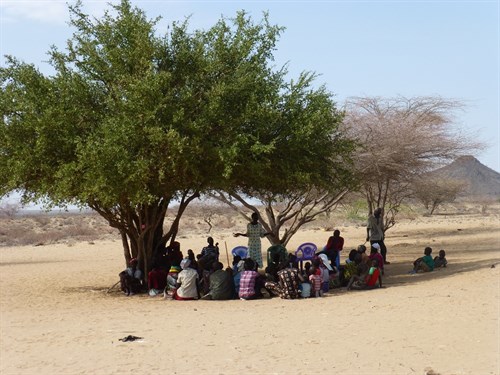
By Rosalind McCollum,
Kenya went to the polls this week in the first general election since devolution reforms began in 2013. As citizens select their new political leaders, including at the devolved county level, we reflect on findings from our recent study which explores priority-setting for health at the new county level, across ten of Kenya’s 47 counties.
Devolution in Kenya occurred largely in response to growing frustrations caused by the wide inequities and inefficiencies of the former centralised government and growing local and international pressure following the post-election violence of 2007-2008. These inequities have led to differing levels of access and use of essential health services, health facilities, and health workers between the 47 counties, influenced by a persons’ geographic location, wealth, education level, gender and age. In response to these unfair differences, the allocation of funds from national to county governments, according to the commission for revenue allocation formula, takes into account each county’s poverty level, with the addition of an equalisation fund for the 14 most marginalised counties to promote development of formerly disadvantaged areas. Once funds reach the county government, how priorities are set and how budgets are allocated falls within the responsibility of county authorities. Since different health services promote equity to varying extents, we carried out qualitative research with a range of respondents, including typically unheard voices, from community to national level. We studied how county decision-makers identify health priorities and the implications of this for health equity and community health services - the first tier of the Kenyan health system and a recognised platform for achieving universal health coverage.
Our findings (summarised in a policy brief) suggest devolution is improving equity between counties, bringing positive ramifications for health equity in previously neglected counties. However, equity within counties remains unclear. Participants described wide variation in the distribution of funds between areas, with some counties attempting to adopt pro-poor distribution and others providing equal distribution regardless of underlying needs. The rapidity of devolution and accompanying funding responsibilities (which went to scale across the country within a matter of months), combined with limited guidance and varied technical capacity has meant that decision-making and prioritisation for health have at times been captured for political and power interests. More powerful politicians were found to influence the distribution of investment, typically leading to more infrastructure within their home areas, compared with those of less powerful politicians. Unless championed by a powerful decision-maker within the county, less visible community health services, including health promotion, disease prevention and referral, risk being neglected in the prioritisation process.
“The decisions might be subjected to a lot of political interference by the county (politicians)…. Many of them see the importance of curative services but they do not see the strength or the importance of the health promotion, public health activities, and therefore getting financial allocation to that department has been a challenge. Because …they make decisions based on votes, will this get me more votes? So, they do not tend to see that when we prevent malaria or prevent diarrhoea that you are going to get votes.” County Level Health Respondent
As Kenya moves forward, we hope these lessons will be beneficial to decision-makers at county level in the new government as they take up the opportunity of the immediate post-election period to address the community health gap and lay down positive institutional structures, practices and norms which promote health equity for all Kenyans.
Recent news
- Improving maternal health in Shebedino district, Ethiopia: Positive stories need to be told, 1 August 2017
- Universal Health Coverage: The economists’ perspective, 26 July 2017
- REACHOUT at the 10th European Congress on Tropical Medicine and International Health, 20 July 2017

This project is funded by the European Union.
